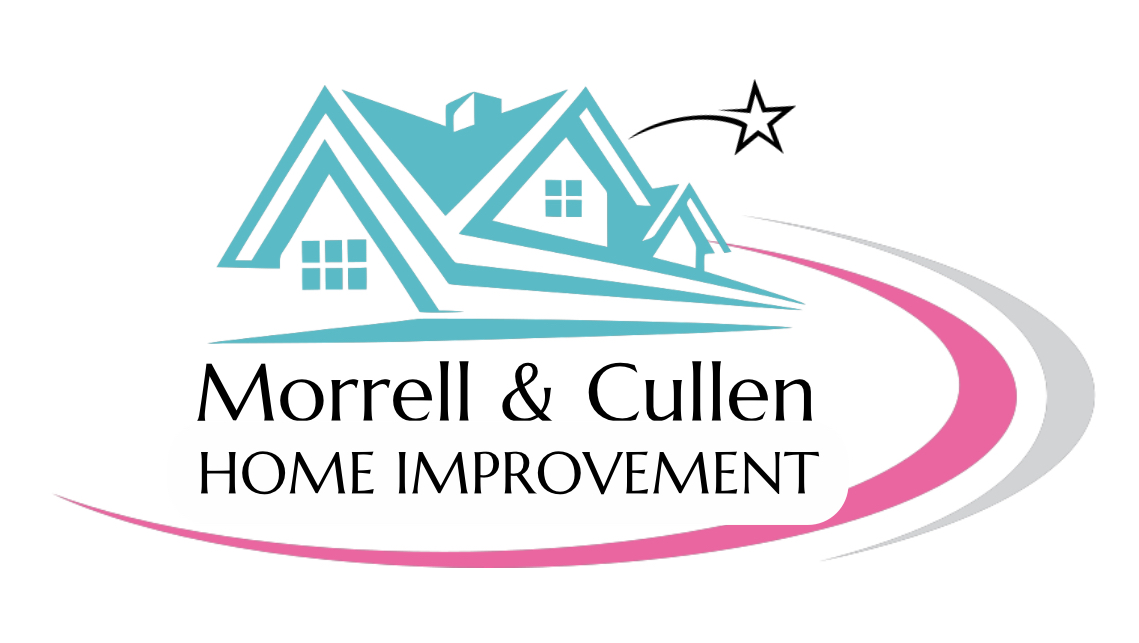Siding Options & Features
When it comes to vinyl siding, there are a variety of factors and features that contribute to the different styles available. And while homeowners don't always need to make decisions about every detail, having a basic understanding of these options can help you to confidently discuss your project and ensure you take full advantage of all that vinyl siding has to offer.
It's important to note, that not every option listed below is available with every vinyl siding product or brand. Consider this article as a helpful guide to highlight the features that matter most to you. From there, your contractor can recommend and identify the siding product that best suits your project and needs.
Style/Design
Vinyl siding is available in a number of styles:
Horizontal (clapboard, dutch-lap, beaded): most traditional style offering a timeless, classic appearance
- Vertical (board and batten, reverse): creates long, clean lines, making a house appear taller and more modern
- Specialty Profiles (cedar shake impressioned, scalloped, staggered/straight edge shingles): adds texture and depth and can be used throughout the entire exterior or as an accent for walls, gables or porches
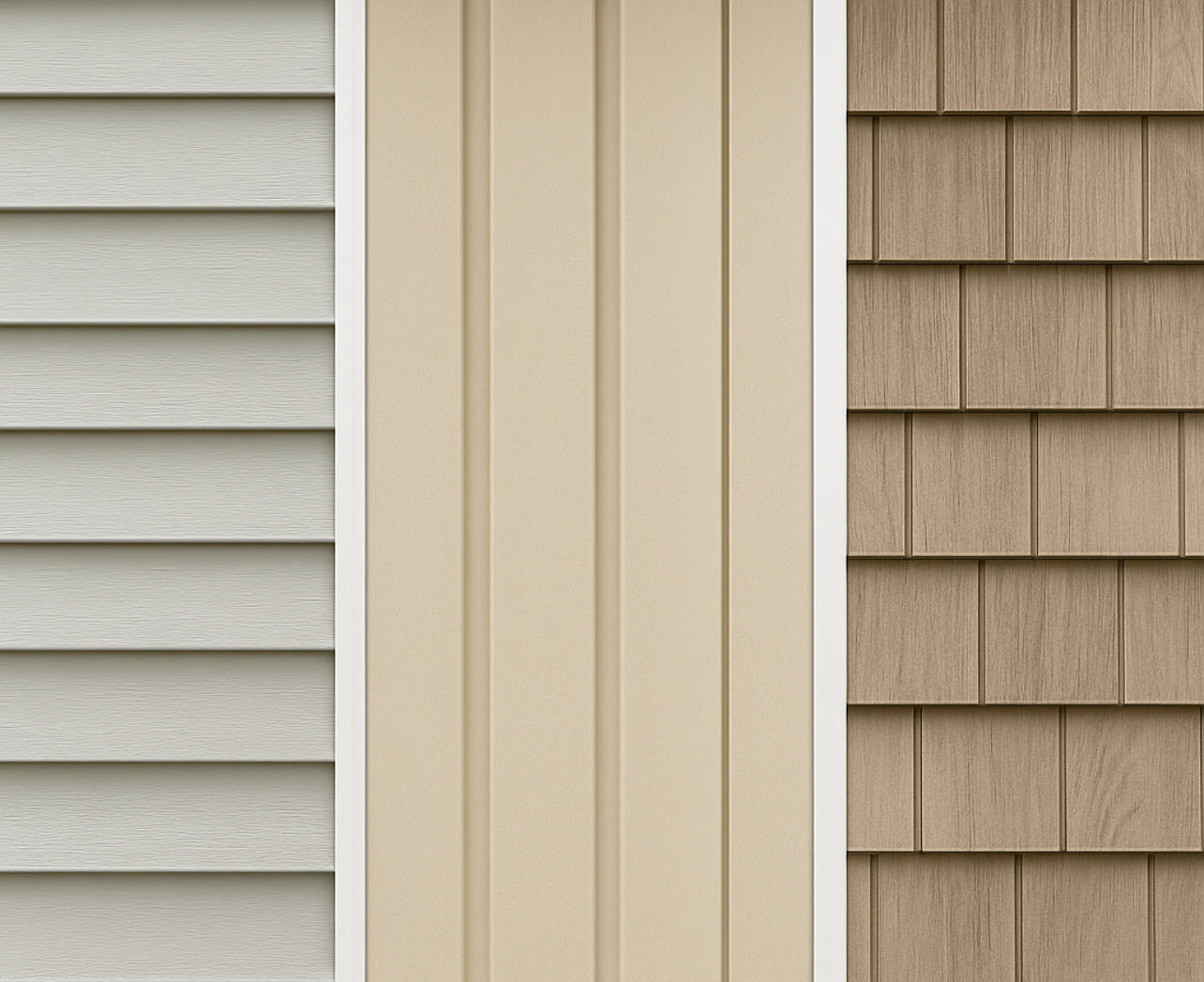
Profile
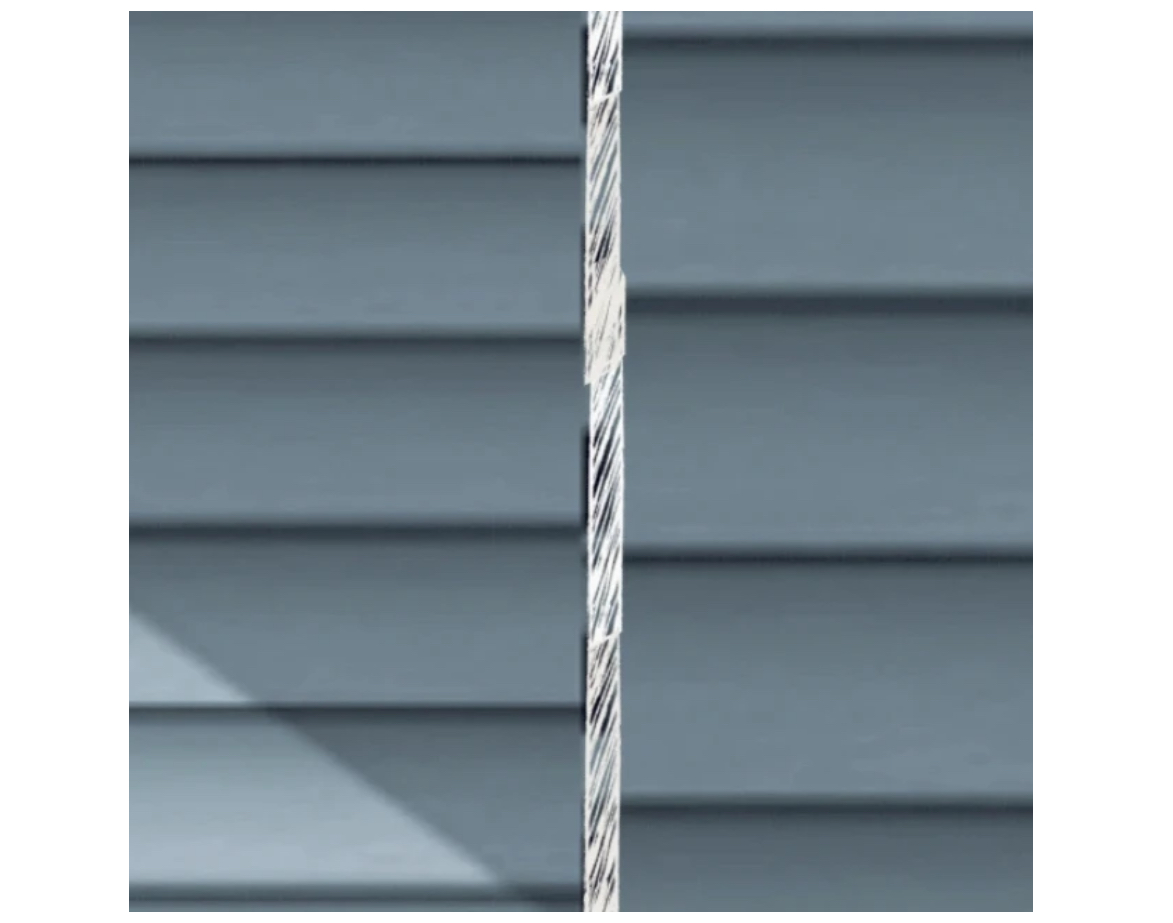
Texture
Vinyl siding is often manufactured to mimic
natural materials from deep wood grain to smooth, which replicates sanded, sealed and painted wood.
- Woodgrain: a textured surface that mimics the appearance of natural wood siding, adding warmth and a more traditional feel. It's a good option for those wanting the look and feel of real wood cladding, without the maintenance and expense of actually having it
- Brushed: a slightly raised surface that mimics the appearance of brush-stroked wood
- Smooth: a flat, non-textured surface, creating a sleek modern aesthetic. It’s often used in budget-friendly homes as it's typically the least expensive finish option
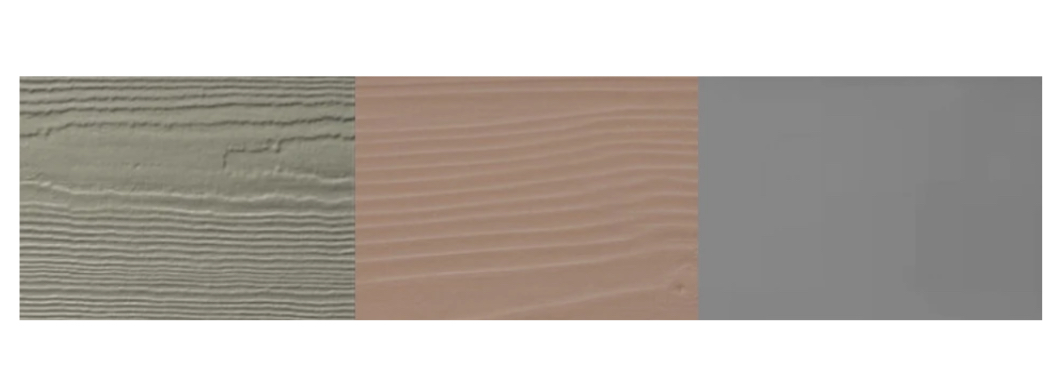
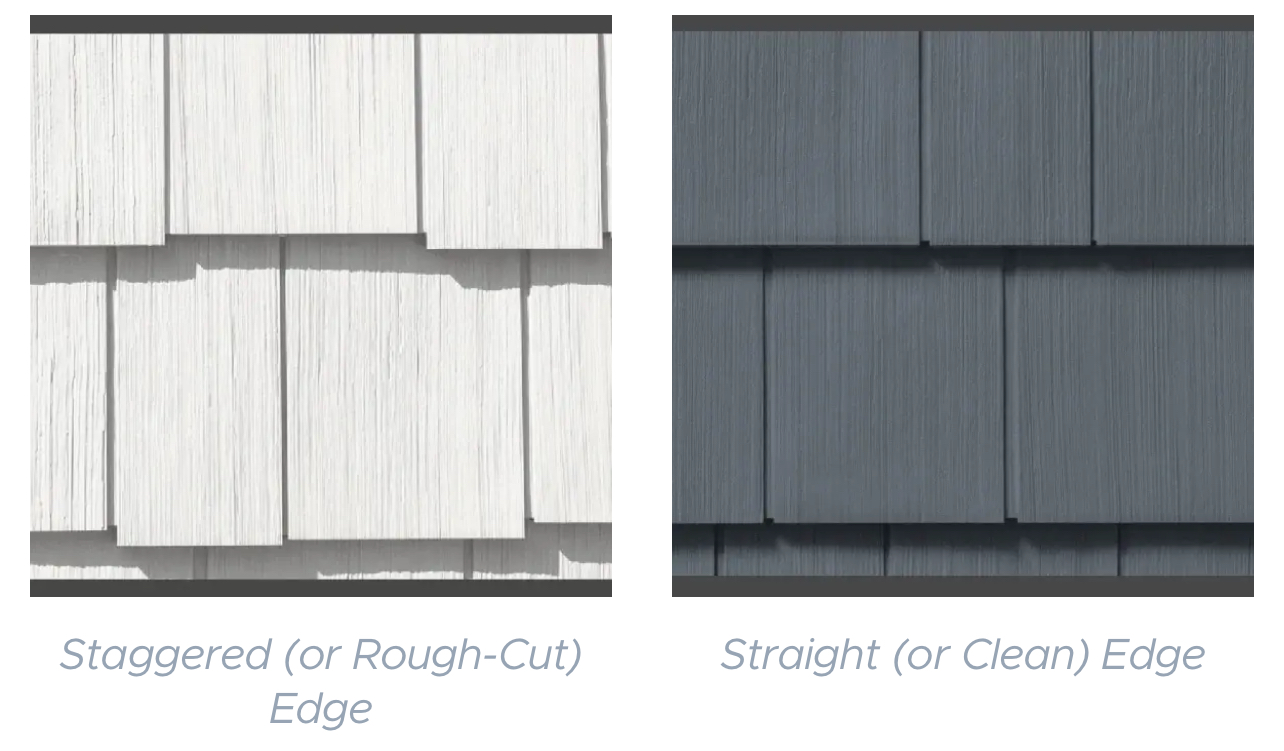
Finish
Depending on the manufacturer, vinyl siding may also be available in a number of finishes as well. Among some of the most-common are:
- Flat: a matte finish; giving a smooth, uniform look
- Semi-Gloss: a finish that is somewhere in-between flat and gloss; making it a good compromise between the two
- Gloss: a shiny finish; giving somewhat of an upscale appearance
Color
Today’s vinyl siding is available in an expensive pallet from neutral earth tones to bold, modern shades. The color you choose should ultimately come down to personal preference, however, if you’re having trouble deciding it can be helpful to consider the following:
Architectural Style: traditional homes often look best with classic, muted colors, while contemporary designs can carry brighter or bolder hues
- Surroundings: consider your neighborhood, landscaping and natural environment to ensure your siding harmonizes rather than clashes
- Trim: choose siding and trim colors that complement eachother rather than fight for attention
- Maintenance: darker tones may show fading more quickly, while lighter tones often mask dirt better
- Future: how long do you plan to live in your house? If there’s a chance you may eventually put it on the market, you may want to choose a color that appeals to the general masses within your particular area (as the color you choose today may impact the resale value of your house tomorrow)
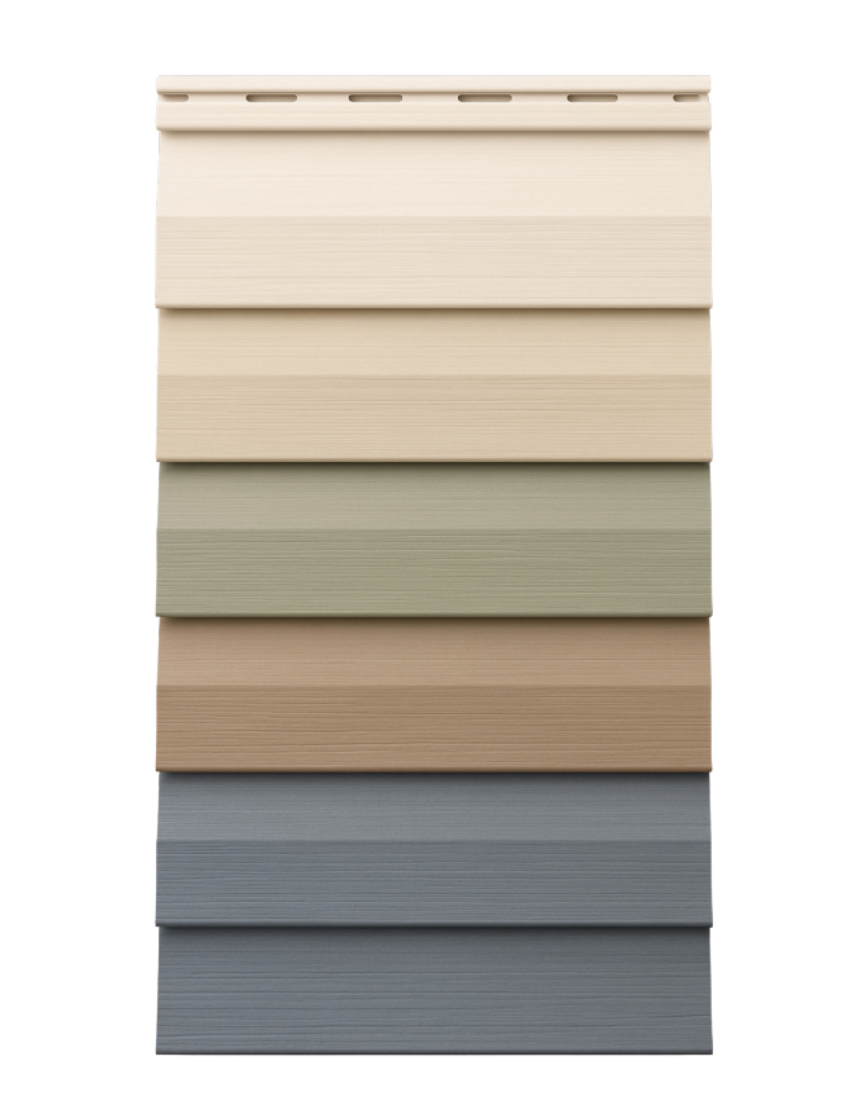

Thickness
The thickness of vinyl siding is important as it can impact the lifespan and durability of your siding.
Horizontal vinyl siding is available in a range of thicknesses, generally between 0.035-0.055 inches:
- 0.035" siding is generally less capable of enduring harsh weather conditions and therefore isn't typically recommended. This is the minimum required thickness set by The American Society of Testing and Materials
- 0.040" siding is usually considered to be a good all-purpose thickness for most climates; and in turn, is considered to be the standard. It's a good option for those who want something durable yet still relatively affordable
- 0.045" siding is slightly thicker and more equipped to withstand climates with exceptionally harsh weather. In turn, it’s also a bit more expensive than 0.040" siding
- 0.050" siding is typically the thickest vinyl siding option and more common in areas with atypical climates that experience abnormally severe weather. It's usually also the most expensive
Note: while the thicknesses above are fairly standard sizes, exact measurements may vary by product and manufacturer (for example, some brands may offer vinyl siding with a thickness of 0.042" or 0.044")
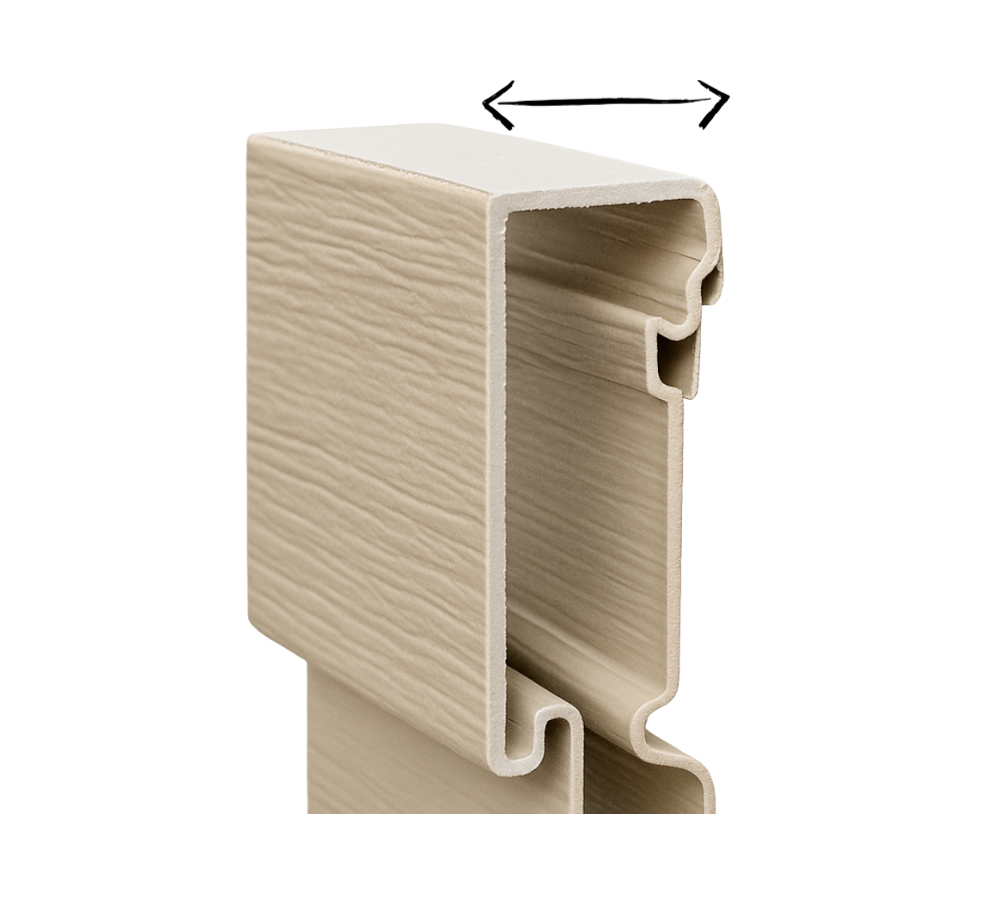
Insulated vs Non-Insulated
For many, the installation of new vinyl siding is the perfect opportunity to increase the energy-efficiency of their homes. And one way this can be done is by opting for insulated vinyl siding.
Insulated vinyl siding is manufactured the exact same way as regular, or non-insulated, vinyl siding except that it has the added benefit of a layer of insulation (EPS, or expanded polysterene) permanently adhered to the back of each panel. Most insulated vinyl siding has an R-value between 2.0-4.0 (but can vary by brand, size & style); providing the average homeowner with around 11% more air-tightness and 1-11% savings on heating & cooling expenses.
Insulated vinyl siding is usually significantly more expensive (often 50%-100% more) than non-insulated. While the installation process is similar for both insulated & non-insulated siding, the cost of labor is generally higher for insulated vinyl siding as it can require more build-out around doors, windows and other openings to create a seamless fit. The durability and maintenance of both products are considerably the same.
Insulated vinyl siding is available in two types:
- Foam backer adhered to the vinyl siding for a one piece siding and installation system
- Foam backer custom-contoured during installation for a snug fit
Both types are available in a variety of profiles and reveals:
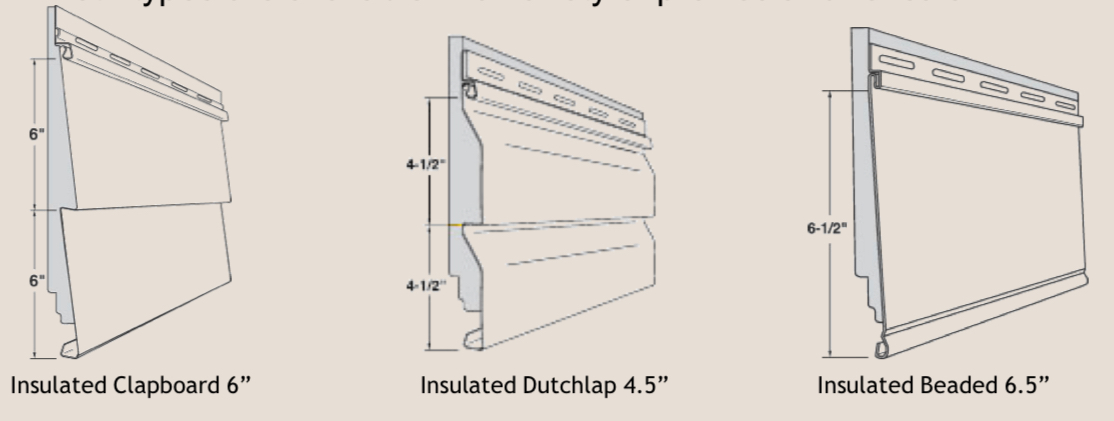
However, regular (or non-insulated) vinyl siding is, in and of itself, naturally thermal-resistant. It's one of the most energy-efficient building products available on the market and it's R-value is higher than any other cladding material. It has a typical R-value measurement of 0.61, resulting in an increase of approximately 2-2.7. Furthermore, installing a good-quality XPS foam board under your siding is another way to quickly increase a home's R-value by 5 (for homes with 6" R19 fiberglass) resulting in an approximate 20% increase in energy-efficiency.
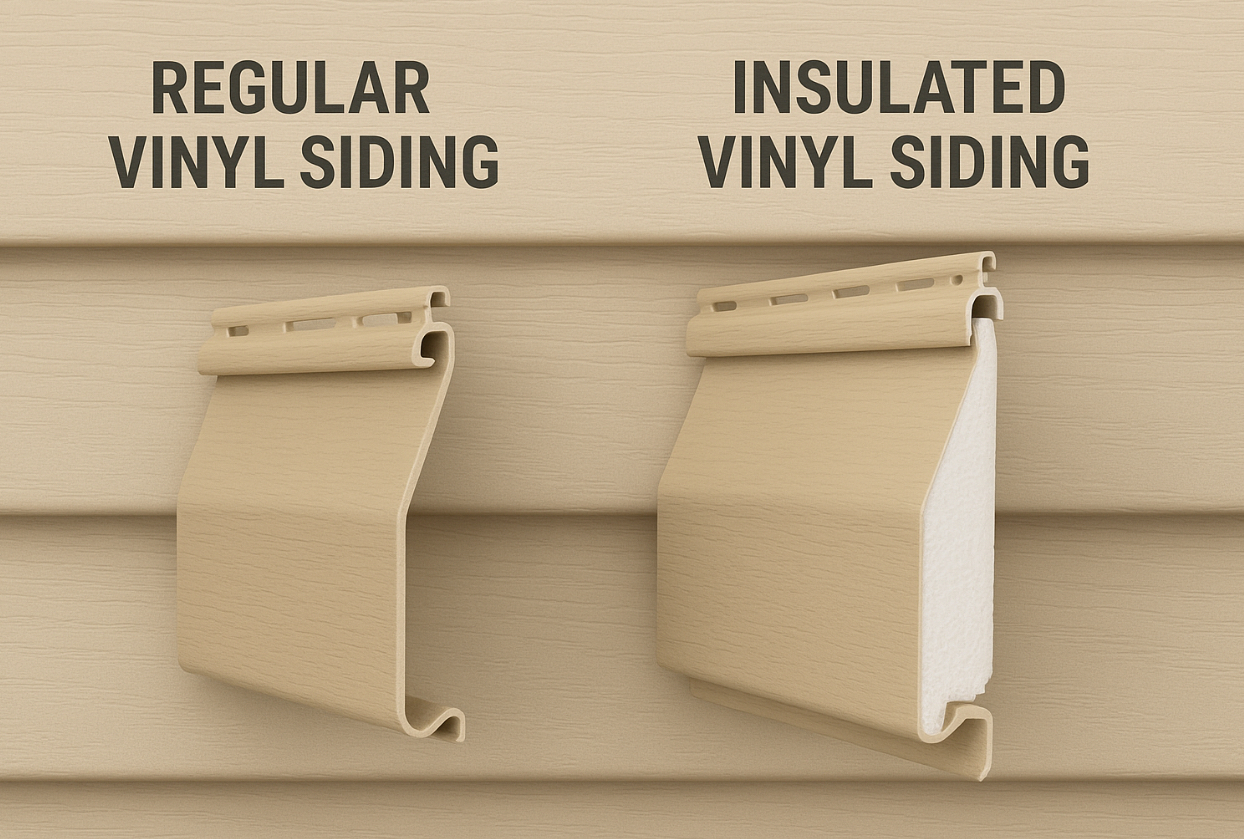
Regardless of the insulation route you choose, it's important to ask your contractor the R-value of the product they're using (as some are particularly low and therefore offer a minimal amount of extra protection). In some scenarios, insulated sheeting may be required by code due to the water barring protection it provides; causing some homeowners to opt to use both insulated sheathing and insulated siding. Either way, your contractor will typically recommend the right products to ensure your home is up to code.
Good to know:
Vinyl siding is available in a wide-range of lengths and widths and the same design can vary in size from one manufacturer to another
